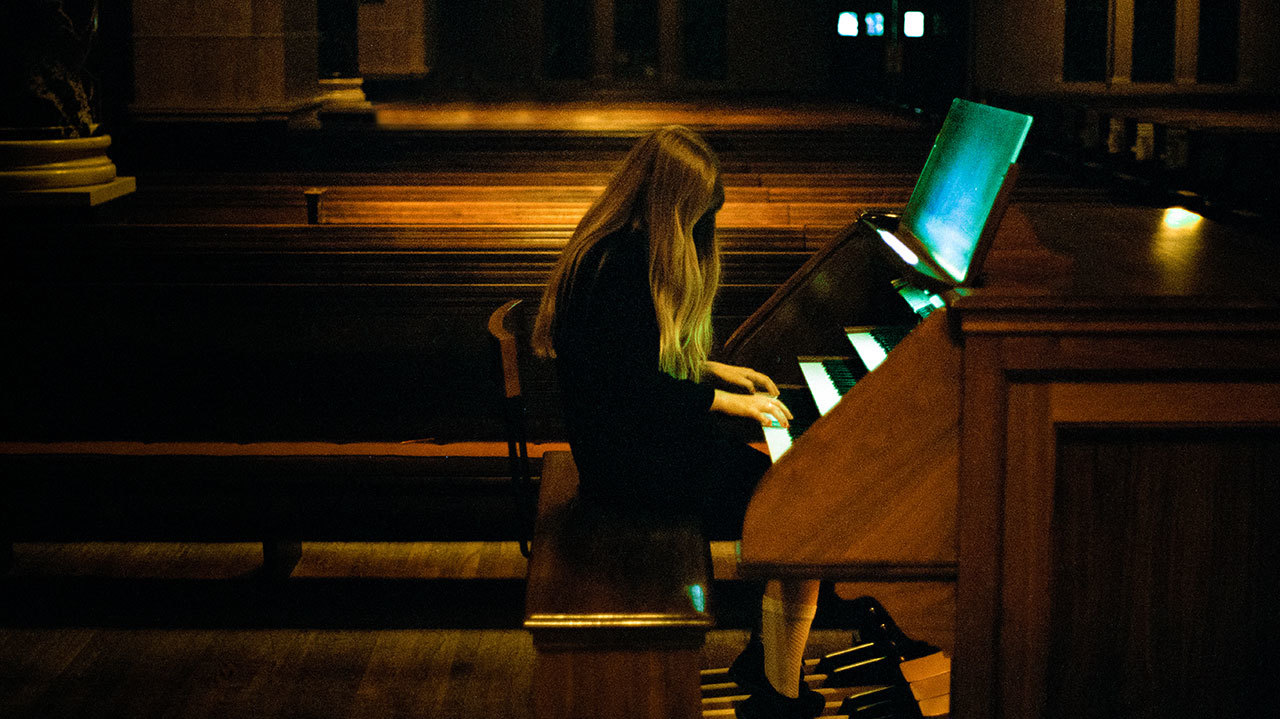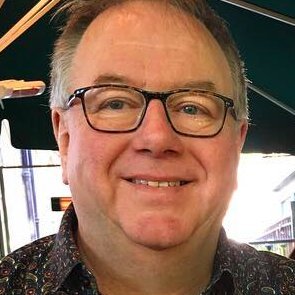“You often find women working alone, very much as an auteur producing their own records, because that is a way that you can control your vision,” says Catherine Anne Davies, aka The Anchoress. “You only have to look at Björk and the way that she’s portrayed in the media, where often men are given a lot of credit for what she does. You can’t blame us for almost locking ourselves away and doing the whole thing ourselves.”
Davies advises against generalising about musicians on the basis of gender, but her idea is one way of accounting for a growing number of remarkable female artists, either solo or very much in charge of their artistic vision, who are currently operating in the fields of art rock and experimental music.
As The Anchoress, Davies won Best Newcomer at the 2016 Prog Awards following on from her debut album Confessions Of A Romance Novelist. The original anchoress, or female hermit, was the 14th century Christian mystic Julian of Norwich, who was also the first published female writer in English. Davies’ pseudonym is a droll reference to the amount of time she spends sequestered away, working on her music. “It suits me quite well, that solitary existence,” she says. “At the moment, gear is my one true love.”
But Davies has stepped out into the light in recent times, touring as support to Simple Minds and also playing guitar and keyboards with the group.
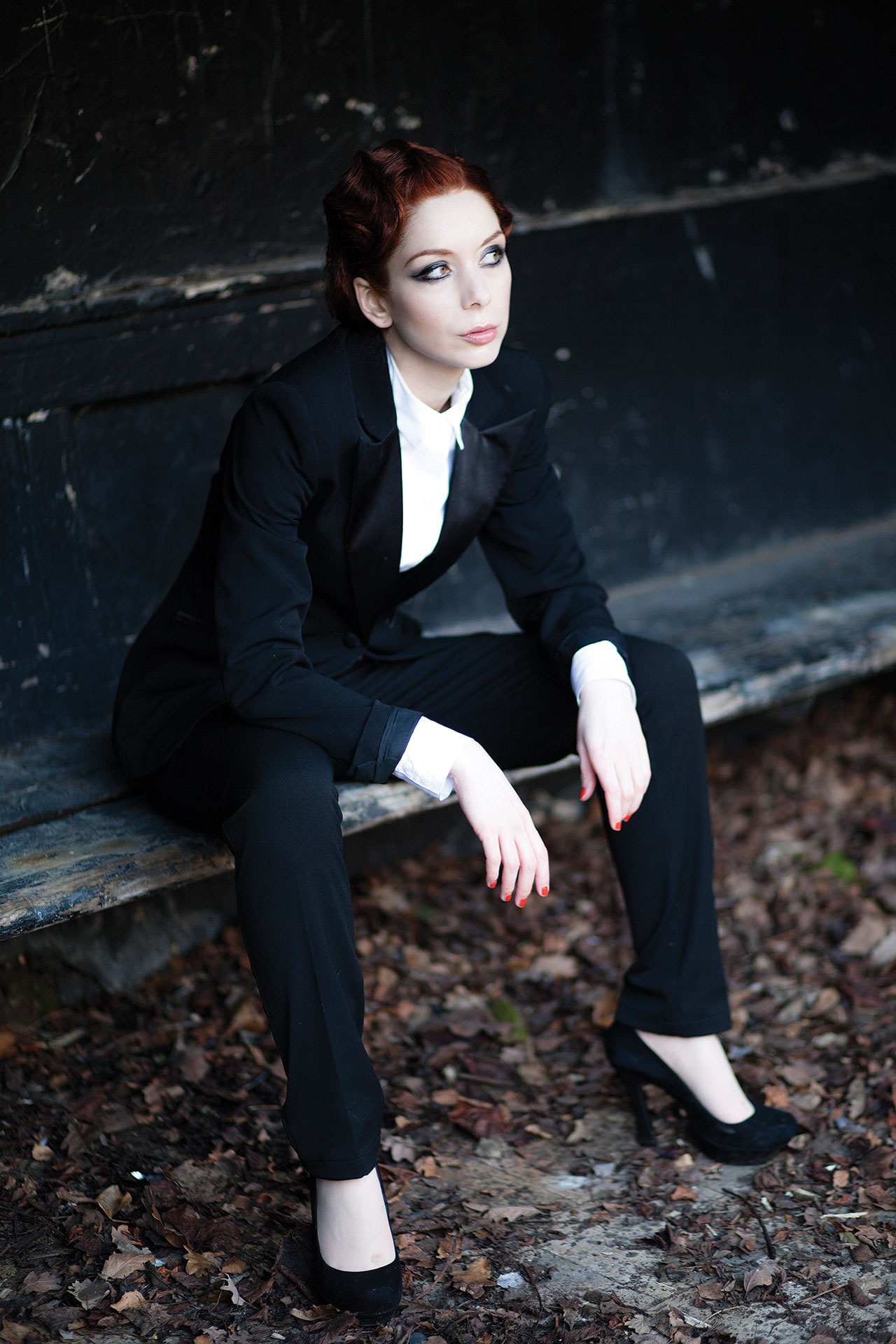
“I wanted to play with the idea of being a confessional singer-songwriter and I think it’s a useful framework, to slip between the autobiographical and the fictive,” Davies explains. “There are hidden keys you can turn and unlock more layers and more depth if you want to, or just listen to it as a pop record.
“I like to play with people’s expectations. I want to make a funk song, I want to make a prog song, I want to make something very ethereal and atmospheric, I want to do a Berlin-era Bowie thing. And the next record will be very much vintage synth-driven.”
As well as putting in studio hours on the “dense, playful sound” characteristic of her finely wrought songs, Davies also works with Paul Draper from Mansun – she has co-written a number of songs for his upcoming debut solo album – and with a core of musicians, prefers a “team effort” to being a strictly solo.
Kate Bush casts a long shadow over idiosyncratic and experimental female solo artists, and there have been comparisons made between her work and Davies’. Of course, if you play them back to back, they sound quite different. Does Davies find this comparison irritating?
“No, not at all, I’ll take that to the bank,” she replies. “For me, if you are making reference to Kate Bush, you are saying that person is creative and interesting, and something that will be long-lasting. I’m happy with that comparison if it helps people conceptualise what I’m doing.”
Another potential pitfall for young artists of either gender is confronting the jaded ‘seen it all before’ attitude of older listeners – at least in theory. Davies doesn’t see this as a problem.
“Songwriting is always an open book and there is always more to be done. What you’ve got is a huge, rich history to draw on and you can make something new out of that. My generation are a post-modern generation so we don’t have those anxieties. I find it quite freeing and I hope that [my music] is a testament to that.”
While still at school, Jane Weaver played in the Britpop band Kill Laura and hit her stride in the folk-tinged ensemble Misty Dixon, who split up in 2004. She then decided to go solo, playing acoustic and electric guitar.
By her 2010 album The Fallen By Watchbird, she was experimenting, using more keyboards and synths. “My music was called folktronica, but you wouldn’t say that now as it’s not trendy,” she says. “Now people are saying ‘kosmische’ and ‘motorik’ about it, so it’s different, although the albums are kind of similar to me.”
Her most recent album, Modern Kosmology, was released earlier this year. It’s a melding of cool vocal lines which often nod to the primary colours of 80s synth pop within the spacey, psychedelic swirl of her guitars and keyboards. The insistent rhythms are reminiscent of Neu! and early Stereolab.
“In the studio you need an open channel to your head without any distractions,” Weaver says. “With some songs you have a picture of it in essence, but then getting it out of your head is like a translation with subtitles.
“I enjoy the isolation, but I wasn’t really enjoying playing live on my own. I like the camaraderie of being in a band and sometimes I needed that heavy backing, the wig-out!”
Her influences include Can, David Axelrod and Acanthus, who provided soundtrack music for some of Jean Rollin’s 1970s horror films. Former Can vocalist Malcolm Mooney, whom Weaver met over a decade ago through her husband, musician and producer Andy Votel, adds vocals on Ravenspoint. “He’s very nice, a good dude, with a commanding, poetic voice,” she says.
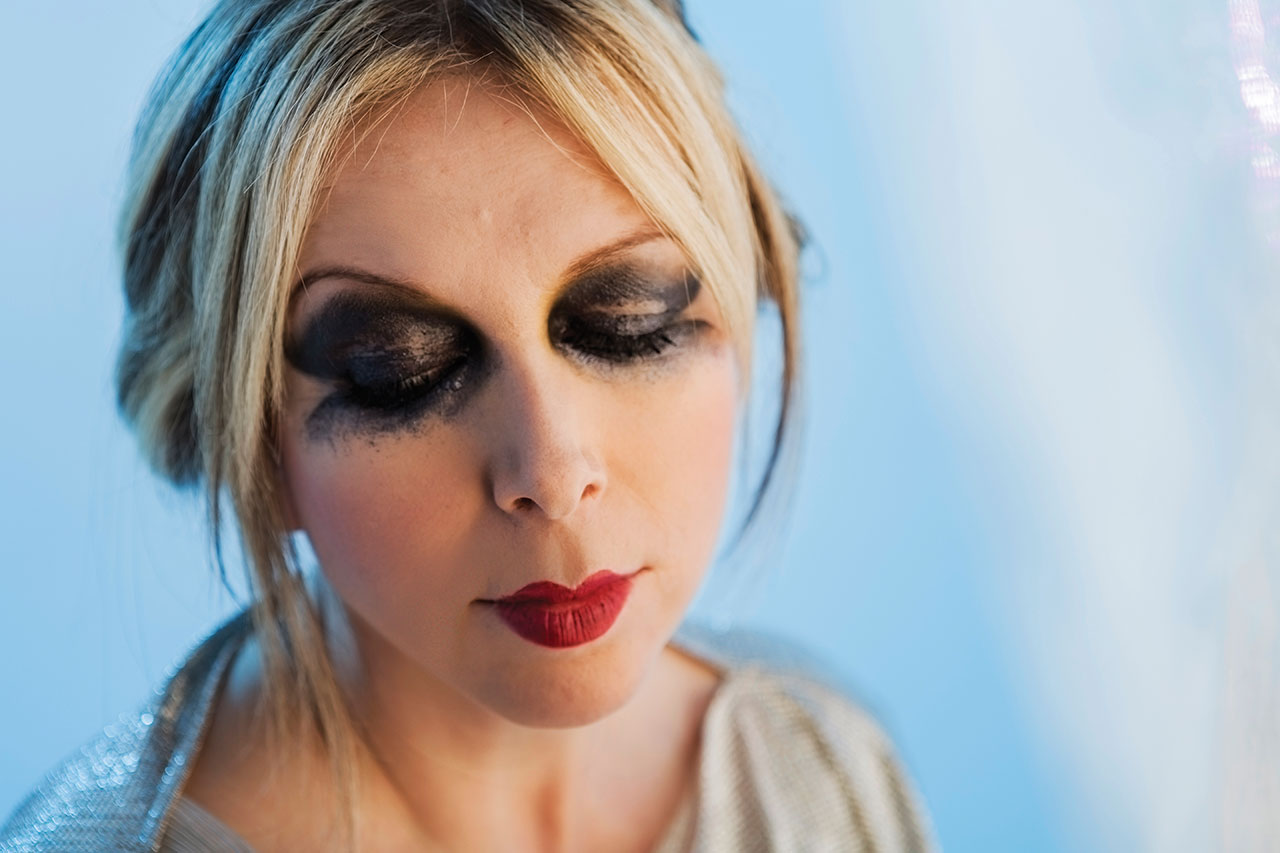
Have you heard the one about the female multi-instrumentalist who turns up at the gig venue and the sound guy says, “Alright darling, are you the singer?” Weaver found that such attitudes have yet to die out when she went into a Manchester guitar shop, asking about Fender Jazz Masters and Jaguars.
“The guy had profiled me and said, ‘Why, is it for a gift for somebody?’ I wish I’d had laser eyes at the point. I was really annoyed.”
In the end she bought a Gibson Firebird: “I’d love to have a massive wall of guitars…”
Modern Kosmology has been widely acclaimed as her best album, but Weaver is still thinking in terms of approaching each one differently. As a student she completed a foundation course in art, but ended up not taking her studies further as she had secured a record deal.
“Now music is my painting,” she says. “I’m influenced more by art than music in a way, because the art world seems to be more experimental and freer and avant garde. I’m currently working with someone doing visual stuff for live shows and I want to go beyond the psychedelic lights. I’d like to do more installation stuff eventually, different ways of combining art and visuals.”
In 2007, Weaver put out the Bearded Ladies compilation on her Bird label, with a mischievous subtitle: “Fifteen homegrown selections of forlorn and freakish female songsmithery from the past four decades.”
One of the musicians who appeared on the album is Welsh artist Cate Le Bon, who first came to notice supporting Gruff Rhys of Super Furry Animals on a solo tour in 2007.
“I think I was lucky to be around musicians like Gruff from an early age, who were hugely influential in terms of attitude. He is a true artist who wouldn’t compromise his art for anything,” she says.
Le Bon uses standard rock instrumentation but her music has always been hallmarked by both twisting melodies and striking lyrics. But rock music is not always the best medium for those of a poetic bent: if your lyrics contain imagery like ‘Escape the cold cement of time’ and ‘Exhale the sound of symphonies’, you can end up being labelled “weirdo art pop”, as Le Bon was by one quality newspaper. “I’ve had people tell me that my songs are nonsensical, but all the words are purposeful,” she shrugs.
Her vocal range is wide, shifting from a husky lower register up to exquisite top notes, her lines shaped by the cadences of her Welsh accent. She admits that if you aren’t tuned in to it, it can sound puzzling. In fact, she recalls, “Someone came up to me after a gig in Texas and asked me what language I was singing in!”
Gruff Rhys rather mischievously described Le Bon as a cross between Nico and Bobbie Gentry, but it turns out that one of her principal influences is Faust. This can be heard most overtly in the unrelenting snare quaver beats on a song like Crab Day, from her album of the same name, which seems to nod back to Faust’s It’s A Rainy Day Sunshine Girl.
“Faust is a group I’ve been listening to for years and years so it’s not just specific to Crab Day,” she counters. “When you cite your favourite artists and albums, people assume that it’s your desire to sound like them, and it’s not.
“What I take from Faust is the abandonment and the playfulness, and a disregard for the notion that all the songs on an album have to be of the same genre. To me it’s punk, it’s reactionary to things that are homogenous and dull, and it’s more of an attitude than it is necessarily a drum beat or a sound.”
Le Bon relocated from Wales to Los Angeles in 2013 where she plays in the instrumental group Banana with Josh Klinghoffer of the Red Hot Chili Peppers. She is especially glad to have hooked up with Tim Presley as they have worked on each other’s material and produced a duo album as Drinks, 2015’s Hermits On Holiday. “I think we cancel out the single‑minded stubbornness in each other,” she laughs.
Le Bon is adamant that she won’t compromise. She wants to remain true to her muse. She describes how she will set about writing her next album: “What comes first is a feeling of what the record will be, which could be described as a shape or a colour or a texture, which is representative of that feeling. When you were a kid trying to make something or write something, there is nothing in your mind except the task at hand and there is no assumption of an audience that you have to please – which is how originality or authenticity is possible.”
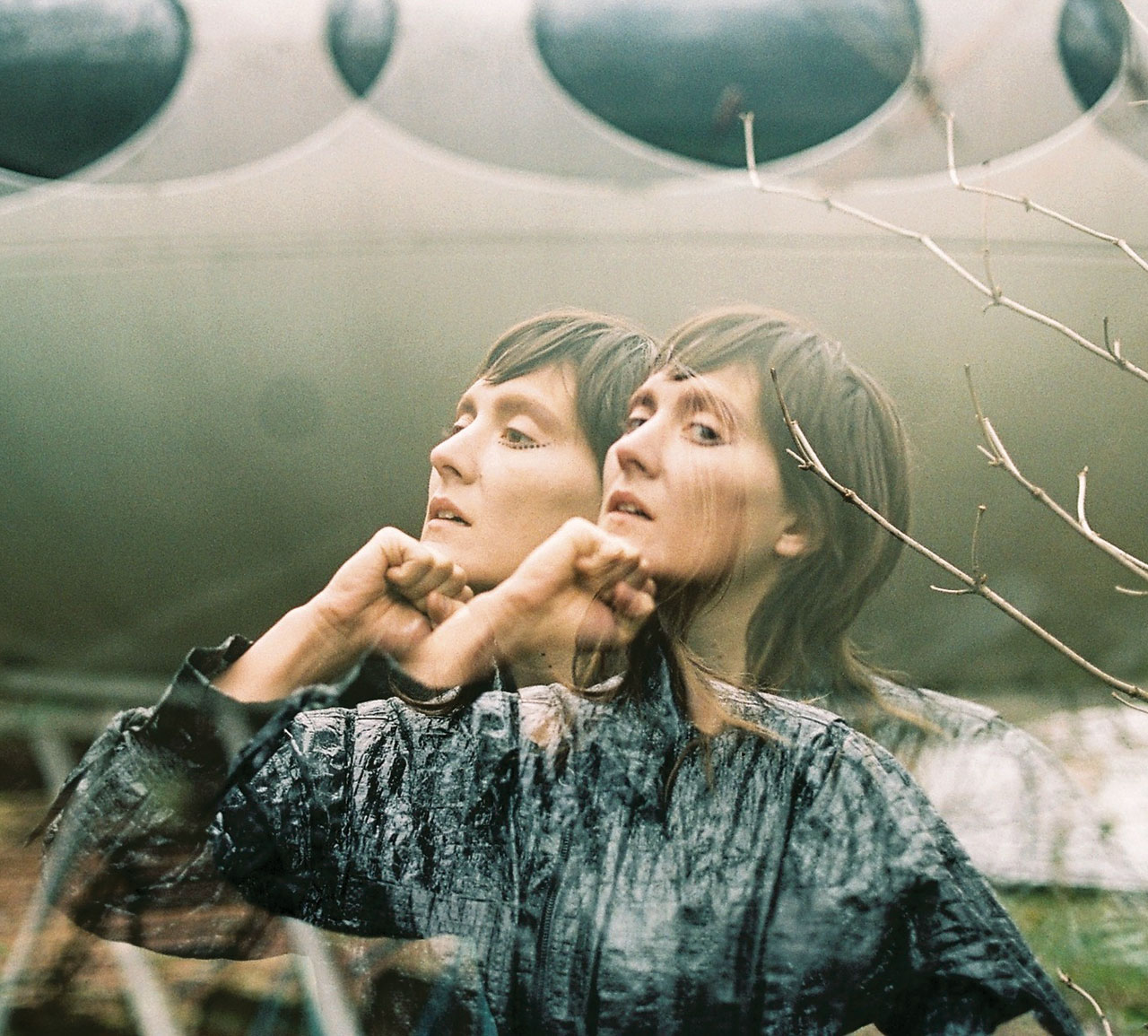
Susanna Wallumrød has a voice of extraordinary emotional potency. In 2009 this writer had the pleasure of seeing her and keyboard player Morten Qvenild in their native Norway, as Susanna And The Magical Orchestra. They played a set of typically slow and sparse cover versions, including Joy Division’s Love Will Tear Us Apart and Leonard Cohen’s Hallelujah. Susanna’s vocals filled the room without histrionic and the way that she inhabited the melody and the lyrics made Dolly Parton’s Jolene – shorn of any jauntiness – so achingly sad that audience members were seen wiping away tears.
On her records, big rock anthems like AC/DC’s It’s A Long Way To The Top are delivered like stark warnings or laments, while on Thin Lizzy’s Jailbreak, Susanna took the original’s romanticised bad boy swagger and recast it like a traditional folk song, where one just knows that the fugitives’ freedom will be short‑lived.
“Quite early on I got interested in jazz and it’s common to use old songs and to make your own personal style and own interpretation so I worked a lot with that,” she says. “And it has just become a way to do music for me – both Purcell and AC/DC.
“I was also listening a lot to, for example, Chet Baker or Miles Davies, and I worked with my singing teacher to sing along with the chords, the solos, trying to get inside the songs a little bit more than being a voice on top. I really enjoyed that way of working into the core of a tune.”
That approach is evident on her earlier albums like Melody Mountain, but she was keen not to become typecast and moved on 3 (2009) into more complex and animated self-penned songs with more synthesisers and electronics.
One of her most exploratory albums – as Susanna – is 2013’s The Forester, which she had initially composed for a classical singer and lute – on which her sparse piano lines are fleshed out by the early music group Ensemble Neon. She has since worked with harpist Giovanna Pessi and she has also played with John Paul Jones who had a duo, Minibus Pimps, with her husband Helge Sten, also known as Deathprod.
In 2009 Susanna collaborated with Norwegian singer and multi‑instrumentalist Jenny Hval in performing a piece, Meshes Of Voice, with keyboards, electronics and some spectacular vocal harmonies. Susanna found an unedited live recording in a drawer and, struck by how good it was, released it on her SusannaSonata label in 2014.
“We really worked hard on it,” she recalls. “Jenny’s vocal arrangements are very complicated.”
Her 2016 album Triangle found her exploring more expansive, free-flowing compositions. “I think that world has really opened up something new for me and I am trying to push further into it,” she says.
Susanna was recently commissioned to make a 70-minute piece by Vossa Jazz festival in Norway. The Garden Of Earthly Delights, based on paintings by Hieronymus Bosch, was created with the all-female quintet Susanna & The Brotherhood Of Our Lady. The aftershow dinner was fittingly visceral.
“It was a traditional dish called Smalahove, which is a sheep’s head on the plate,” she says. “One of us ate the eye, although not me!”
With her 2013 album Ceremony, Anna von Hausswolff turned a corner in her music from the melancholic, sombre piano ballads that hallmarked her debut album, 2010’s Singing From The Grave, to songs played on the pipe organ of Annedalskyrkan Cathedral in her home town of Gothenburg.
“It was the first album when I wanted the record to work like a film, so there was a clear storyline and I wanted it to feel like one piece,” she explains.
The pipe organ songs were originally worked out on a synthesiser with samples, before playing the real thing. It was surprisingly easy to record, with one microphone hoisted up 10 metres.
“Still, when I get to play some pipe organs I get overwhelmed by the volume of the instrument,” she says. “If I get some time with the pipe organ I rarely sing at all, because I just want to hear the instrument and the room. So the instrument itself has contributed to more of the instrumental pieces that I’m making at the moment. It’s a very meditative thing for me to do, because I can play out these drones, take time and relax, and I can breathe and I can listen – it’s not a thing to rush.”
She jokes that more people are letting her in now – she played solo in Lincoln Cathedral in 2013 – and her most recent album, The Miraculous, features the colossal pipe organ in the Acusticum concert hall in the Swedish town of Piteå, which was more difficult to record due to the hall acoustics. In a standard concert with her group she plays a Nord C2 D double manual synthesiser with organ samples and pedals and she is developing another machine with her own samples.
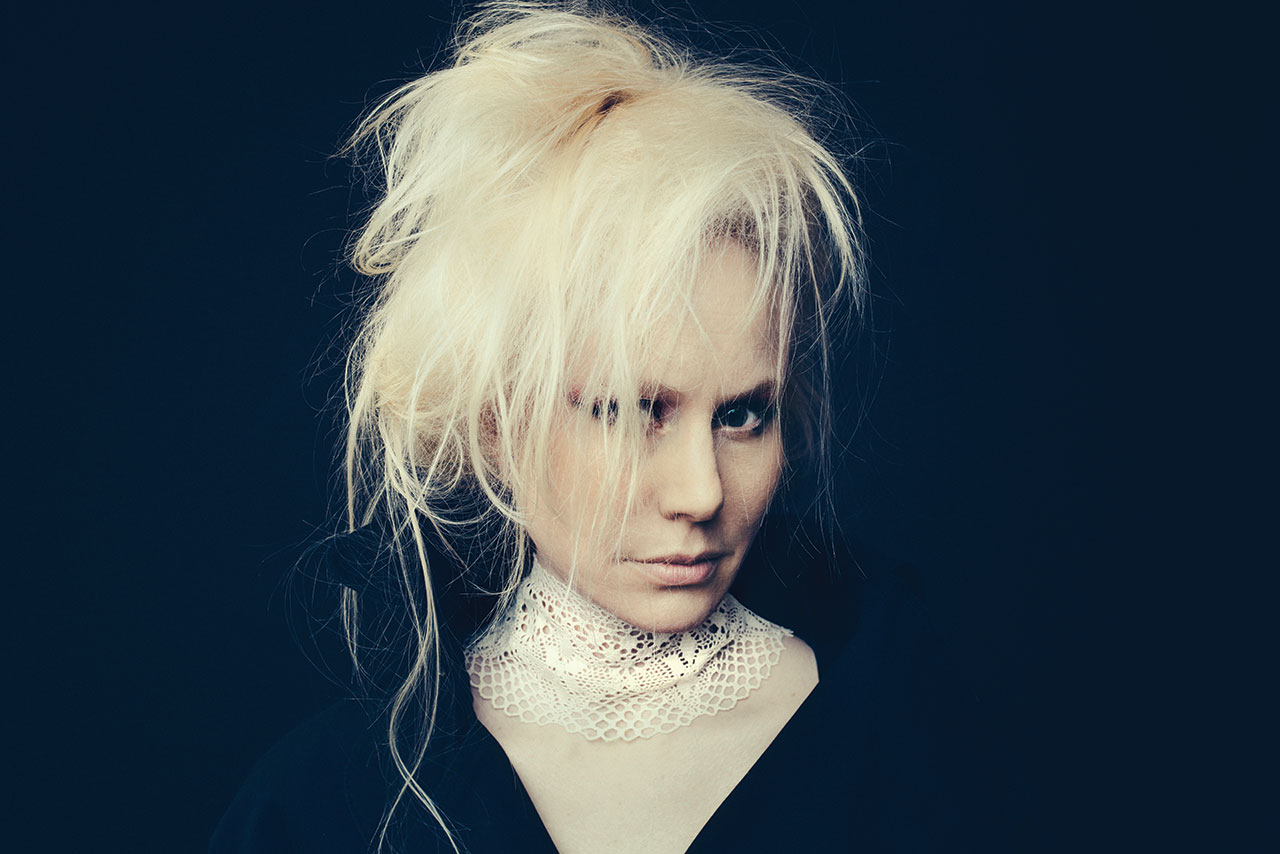
The combination of the massive organ sound with its overtones and von Hausswolff’s soaring voice is a powerful one, but it was under threat when she damaged her vocal cords, losing her voice in the early 2010s. However, she has since painstakingly rebuilt it with the help of a voice teacher.
“My vocal cords are super-sensitive,” von Hausswolff says. “I’m very jealous of artists who can sing with their rock’n’roll lifestyle because I really can’t. I can go into certain sounds with my voice where I think, ‘This sounds really good but it’s not a good place for me to be in.’ I recognise the bad places now and avoid them.”
She cites influences like PJ Harvey, Popol Vuh and Bobby Beausoleil’s score to Lucifer Rising, while enthusing about Hans Zimmer’s organ soundtrack to Interstellar. Some of the music played with her band is lyrical, while some uses slow, pulverising beats reminiscent of Swans, with whom she has toured. She mentions groups she has seen live who have really impressed her.
“Norwegian punk/metal band Okkultokrati are super-energetic, really aggressive, at high volume, and give you a boost of energy and a kind of positive way of experiencing aggressive emotions.
“If you watch Sunn O))) or Earth, it’s more of an inner journey,” von Hausswolff adds. “You just stand there and feel your muscles vibrating with the music and the frequencies fill you up – there isn’t a single space within you that isn’t filled up with music.”
Given the physicality of her own music, where does she see it fitting into this spectrum? “I want everything,” she laughs. “No, I really do. I have to have in mind the venue when I play a live show. If I’m in a rock club it becomes a little bit more extroverted. If I play a pipe organ show and it’s all instrumental, I play with my back to the audience and it becomes more introverted – it’s more about what’s going on in the room and within themselves.”
The one topic that all five musicians have picked up on, beyond any issues of gender, is the need to have a quiet space in which to create, something they recognise is under threat from the speed of modern life and its incessant barrage of information.
Davies and Weaver ring fence time alone in the studio, and Le Bon says she can’t understand why some people share their creative processes on social media. Susanna also mentions that she feels our connections with nature are being lost, while other connections could do with being lessened.
“My friends are all disturbed by the thought that we’re all connected all the time, and everyone is trying to find a way of having some time away from the computer, phone and social media,” she says.
Echoing these thoughts, von Hausswolff also wants to reconnect in a way that seems to reflect her huge, immersive music. “Nature scares me, intimidates me a bit,” she says. “But it’s also overwhelmingly beautiful, it doesn’t judge you, it’s a calm, forgiving place.”
For more, see: www.iamtheanchoress.com, www.janeweavermusic.com, www.catelebon.com, www.susannamagical.com and www.annavonhausswolff.org.
This Woman’s Work
Prog picks our favourite tracks from the womens’ varied works
The Anchoress - What Goes Around (Acoustic Version) (Confessions Of A Romance Novelist: CD2 The Kitchen Sessions, 2016)
Revenge sounds delicious here – ‘You will get your sticky end/I hear you practised on my friend’ – in a version of just voice and strings that highlights the brilliance of the songwriting.
Jane Weaver - H>A>K (Modern Kosmology, 2017)
This song achieves a sleek propulsion through throbbing bass and synths, and then leaves the runway courtesy of Brian Edwards’ flamboyant, high-velocity drumming, with Weaver’s multitracked vocal chorales up in the firmament.
Cate Le Bon - Hollow Trees House Hounds (My Oh My, 2009)
This is a groovy, fuzz guitar-driven strut with a serpentine melody, and it finds Le Bon effortlessly singing across her full range. The accompanying video begins with her laying an egg and gets steadily more surreal from there.
Susanna And Ensemble Neon - The Forester (The Forester, 2013)
An uncategorisable, bittersweet 15-minute song suite with arrangements by the Ensemble’s Jan Martin Smørdal and Julian Skar. It was derived from Susanna’s piano demos and encompasses both early music and modernism.
Anna Von Hausswolff - Evocation (The Miraculous, 2015)
An upward-arcing vocal glissando cues in this magisterial, fabulously melodramatic single that lopes along with great club-footed beats, a sweet vocal line and an organ sound that could flatten a house.
